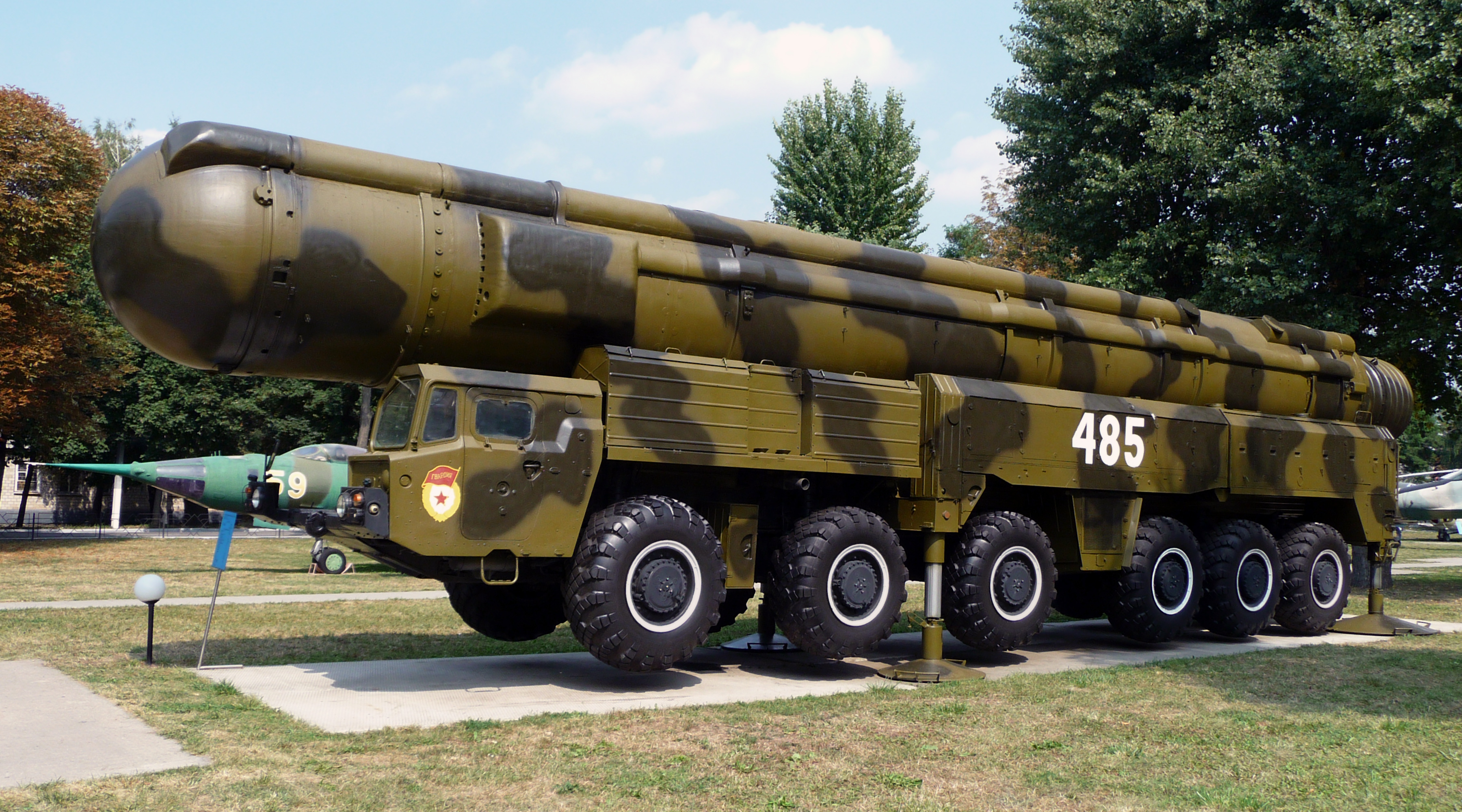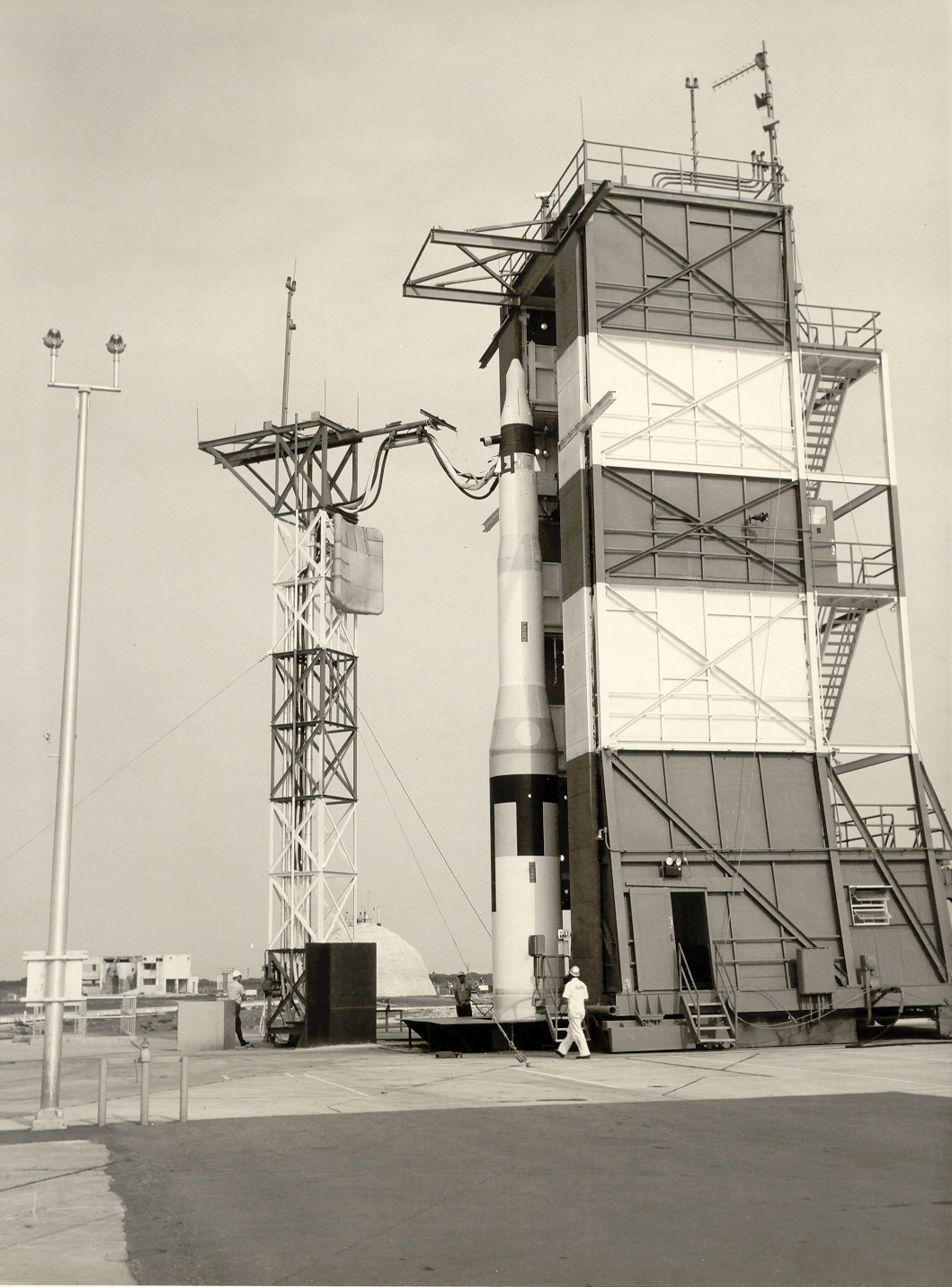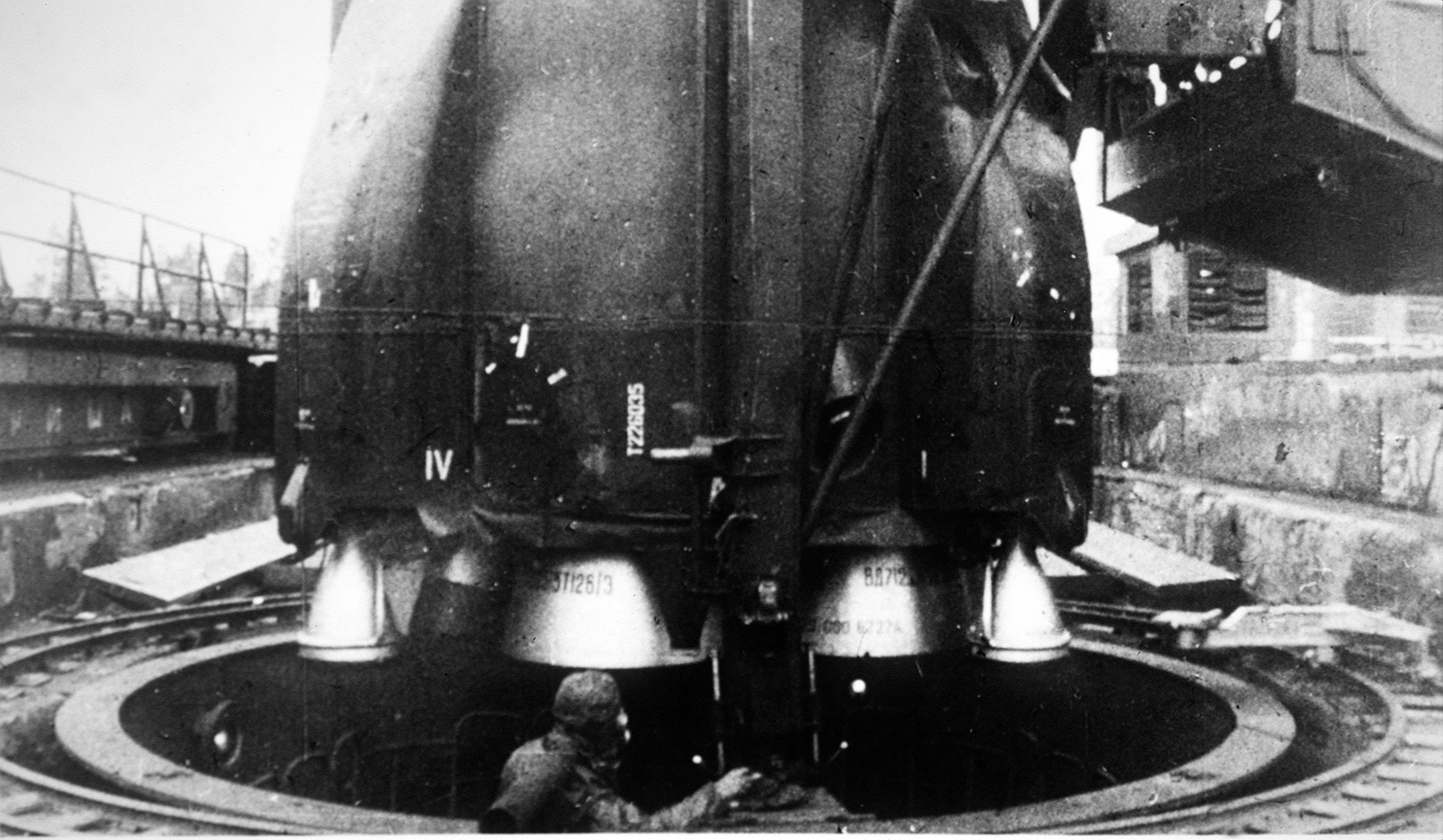|
RS-26 Rubezh
The RS-26 Rubezh (in Russian language, Russian: ''РС-26 Рубеж'') (''frontier'' or ''boundary'', also known under the name of its research and development, R&D program Avangard (hypersonic glide vehicle), Avangard ''Авангард'') SS-X-31 or SS-X-29B (another version of SS-27), is a Russian Solid-fuel rocket, solid-fueled intercontinental ballistic missile, equipped with a Thermonuclear weapon, thermonuclear Multiple independently targetable reentry vehicle, MIRV or maneuverable reentry vehicle, MaRV payload. The missile is also intended to be capable of carrying the Avangard (hypersonic glide vehicle), Avangard hypersonic glide vehicle. The RS-26 is based on RS-24 Yars, and constitutes a shorter version of the RS-24 with one fewer stages. The development process of the RS-26 has been largely comparable to that of the RSD-10 Pioneer, a shortened derivative of the RT-21 Temp 2S. Deployment of the RS-26 is speculated to have a similar strategic impact as the RSD-10 Pioneer, ... [...More Info...] [...Related Items...] OR: [Wikipedia] [Google] [Baidu] |
Intercontinental Ballistic Missile
An intercontinental ballistic missile (ICBM) is a ballistic missile with a range greater than , primarily designed for nuclear weapons delivery (delivering one or more thermonuclear warheads). Conventional, chemical, and biological weapons can also be delivered with varying effectiveness, but have never been deployed on ICBMs. Most modern designs support multiple independently targetable reentry vehicles (MIRVs), allowing a single missile to carry several warheads, each of which can strike a different target. Russia, the United States, China, France, India, the United Kingdom, and North Korea are the only countries known to have operational ICBMs. Early ICBMs had limited precision, which made them suitable for use only against the largest targets, such as cities. They were seen as a "safe" basing option, one that would keep the deterrent force close to home where it would be difficult to attack. Attacks against military targets (especially hardened ones) still demande ... [...More Info...] [...Related Items...] OR: [Wikipedia] [Google] [Baidu] |
RSD-10 Pioneer
The RSD-10 ''Pioneer'' (russian: ракета средней дальности (РСД) «Пионер» tr.: ''raketa sredney dalnosti (RSD) "Pioner"''; en, Medium-Range Missile "Pioneer") was an intermediate-range ballistic missile with a nuclear warhead, deployed by the Soviet Union from 1976 to 1988. It carried GRAU designation 15Ж45 (''15Zh45''). Its NATO reporting name was SS-20 Saber. Its deployment was a major cause of NATO's 'Double-Track Decision', which led to the deployment of more medium-range nuclear weapons in Western Europe. The RSD-10 was withdrawn from service under the 1987 Intermediate-Range Nuclear Forces Treaty. Specifications The missile was high, in diameter and weighed 37.1 tons. It was based on two solid-fuel fiberglass clad stages of the RT-21 Temp 2S (SS-16 ''Sinner''), so it was also known as the RT-21M ''Pioneer''. The missile's range was from initially; the final model had a maximum range of possibly . Initially the missile was fitted wi ... [...More Info...] [...Related Items...] OR: [Wikipedia] [Google] [Baidu] |
DF-5
The Dongfeng 5 () or DF-5 is a second-generation multistage rocket, two stage Chinese intercontinental ballistic missile. It has a length of 32.6 m and a diameter of 3.35 m. It weighs in at 183,000 kilograms and it has an estimated range of 12,000 to 15,000 kilometers. The DF-5 had its first flight in 1971 and was in operational service 10 years later. One of the limitations of the missile is that it takes between 30 and 60 minutes to fuel. The DF-5 is due to be replaced by the solid-fuelled DF-41. Around 2015, the newest variant DF-5B force are believed to have received a Multiple independently targetable reentry vehicle, MIRV upgrade; according to ''Business Insider'', with DF-5B: "China has the ability to deliver nuclear warheads nearly anywhere on earth (outside of South America, at least)". History The DF-5 was designed under the leadership of Tu Shou'e [屠守锷 at the China Academy of Launch Technology (CALT); Li Xu'e [李绪鄂] served as deputy chief designer. The missi ... [...More Info...] [...Related Items...] OR: [Wikipedia] [Google] [Baidu] |
LGM-30 Minuteman
The LGM-30 Minuteman is an American land-based intercontinental ballistic missile (ICBM) in service with the Air Force Global Strike Command. , the LGM-30G Minuteman III version is the only land-based ICBM in service in the United States and represents the land leg of the U.S. nuclear triad, along with the Trident submarine-launched ballistic missile (SLBM) and nuclear weapons carried by long-range strategic bombers. Development of the Minuteman began in the mid-1950s when basic research indicated that a solid-fuel rocket motor could stand ready to launch for long periods of time, in contrast to liquid-fueled rockets that required fueling before launch and so might be destroyed in a surprise attack. The missile was named for the colonial minutemen of the American Revolutionary War, who could be ready to fight on short notice. The Minuteman entered service in 1962 as a deterrence weapon that could hit Soviet cities with a second strike and countervalue counterattack if ... [...More Info...] [...Related Items...] OR: [Wikipedia] [Google] [Baidu] |
RT-2PM2 Topol-M
The RT-2PM2 «Topol-M» (russian: РТ-2ПМ2 «Тополь-М», NATO reporting name: SS-27 "Sickle B", other designations: SS-27 Mod 1, RS-12M1, RS-12M2, formerly incorrectly RT-2UTTKh) is one of the most recent intercontinental ballistic missiles to be deployed by Russia (see RS-24 sometimes classified as a Topol-M variant), and the first to be developed after the dissolution of the Soviet Union. It was developed from the RT-2PM Topol mobile intercontinental ballistic missile. In its Russian designation РТ stands for "ракета твердотопливная", raketa tverdotoplivnaya ("solid fuel rocket"), while УТТХ – for "улучшенные тактико-технические характеристики", uluchshenniye taktiko-tekhnicheskie kharakteristiki ("improved tactical and technical characteristics"). "Topol" (тополь) in Russian means " white poplar". It is designed and produced exclusively by the Moscow Institute of Thermal Technology, and bui ... [...More Info...] [...Related Items...] OR: [Wikipedia] [Google] [Baidu] |
RT-2PM Topol
The RT-2PM Topol (russian: РТ-2ПМ Тополь ("Poplar"); NATO reporting name SS-25 Sickle; GRAU designation: 15Ж58 ("15Zh58"); START I designation: RS-12M Topol) is a mobile intercontinental ballistic missile designed in the Soviet Union and in service with Russia's Strategic Missile Troops. , Russia planned to replace all RT-2PM ICBMs with versions of Topol-M. Development The three stage solid propellant RT-2PM Topol is an improved mobile ICBM which replaced earlier outdated missile complexes. It emerged from the same line of development as mobile missiles such as the RT-21 Temp 2S and the RSD-10 Pioneer, and was deployed as a replacement for the widely deployed UR-100. The United States considered developing their own road-mobile ICBM called the Midgetman, but the program was canceled with the end of the Cold War. Development of the RT-2PM was approved on July 19, 1977 and carried out by the Moscow Institute of Thermal Technology headed by Alexander Nadiradze. Flight ... [...More Info...] [...Related Items...] OR: [Wikipedia] [Google] [Baidu] |
UR-100N
The UR-100N, also known as RS-18A is an intercontinental ballistic missile in service with Soviet and Russian Strategic Missile Troops. The missile was given the NATO reporting name SS-19 Stiletto and carries the industry designation 15A30. Development Development of the UR-100N began at OKB-52 in 1970 and flight tests were carried out from 1973 through 1975. In 1976, the improved UR-100NUTTKh (NATO designation SS-19 Mod 3) version entered development with flight tests in the later half of the decade. The rocket's control system was developed at NPO "Electropribor" (Kharkiv, Ukraine). Description The UR-100N is a fourth-generation silo-launched liquid-propellant ICBM similar to the UR-100 but with much increased dimensions, weights, performance, and payload. The missile was not designed to use existing UR-100 silos, and therefore had new silos constructed for it. The missile has a preparation time to start of 25 minutes, a storage period of 22 years, and 6 MIRVs. Operationa ... [...More Info...] [...Related Items...] OR: [Wikipedia] [Google] [Baidu] |
R-36 (missile)
The R-36 (russian: Р-36) is a family of intercontinental ballistic missiles (ICBMs) and space launch vehicles ( Tsyklon) designed by the Soviet Union during the Cold War. The original R-36 was deployed under the GRAU index 8K67 and was given the NATO reporting name SS-9 Scarp. It was able to carry three warheads and was the first Soviet MRV ( multiple re-entry vehicle) missile. The later version, the R-36M was produced under the GRAU designations 15A14 and 15A18 and was given the NATO reporting name SS-18 Satan. This missile was viewed by certain United States analysts as giving the Soviet Union first strike advantage over the U.S., particularly because of its rapid silo-reload ability, very heavy throw weight and extremely large number of re-entry vehicles. Some versions of the R-36M were deployed with 10 warheads and up to 40 penetration aids and the missile's high throw-weight made it theoretically capable of carrying more warheads or penetration aids. Contemporary ... [...More Info...] [...Related Items...] OR: [Wikipedia] [Google] [Baidu] |
RS-28 Sarmat
The RS-28 Sarmat (, named after the Sarmatians; NATO reporting name: SS-X-29 or SS-X-30), known as "Satan II", is a Russian liquid-fueled, MIRV-equipped super-heavy intercontinental ballistic missile (ICBM) produced by the Makeyev Rocket Design Bureau since 2009. It is intended to replace the R-36M ICBM (SS-18 'Satan') in Russia's arsenal. The ''Sarmat'' is one of six new Russian strategic weapons unveiled by Russian president Vladimir Putin on 1 March 2018. The RS-28 Sarmat made its first test flight on 20 April 2022, and as of December 2021, the Russian government expected the missile to enter service in 2022. On 16 August 2022, a state contract was signed for the manufacture and supply of the Sarmat strategic missile system. History In February 2014, a Russian military official announced the ''Sarmat'' was expected to be ready for deployment around 2020. In May 2014 another official source suggested that the program was being accelerated, and that it would, in his opinion, ... [...More Info...] [...Related Items...] OR: [Wikipedia] [Google] [Baidu] |
Intermediate-Range Nuclear Forces Treaty
The Intermediate-Range Nuclear Forces Treaty (INF Treaty, formally the Treaty Between the United States of America and the Union of Soviet Socialist Republics on the Elimination of Their Intermediate-Range and Shorter-Range Missiles; / ДРСМД, ) was an arms control treaty between the United States and the Soviet Union (and its successor state, the Russian Federation). US President Ronald Reagan and Soviet General Secretary Mikhail Gorbachev signed the treaty on 8 December 1987. The US Senate approved the treaty on 27 May 1988, and Reagan and Gorbachev ratified it on 1 June 1988. The INF Treaty banned all of the two nations' land-based ballistic missiles, cruise missiles, and missile launchers with ranges of (short medium-range) and (intermediate-range). The treaty did not apply to air- or sea-launched missiles. By May 1991, the nations had eliminated 2,692 missiles, followed by 10 years of on-site verification inspections. Amidst continuing growth of China's missile ... [...More Info...] [...Related Items...] OR: [Wikipedia] [Google] [Baidu] |
Sary Shagan
Sary Shagan ( rus, Сары-Шаган; kz, Сарышаған) is an anti-ballistic missile testing range located in Kazakhstan. On 17 August 1956 the Council of Ministers of the Soviet Union authorized plans for an experimental facility for missile defense located at Sary Shagan, on the west bank of Lake Balkhash. The first missile launched from the facility was a V-1000 on 16 October 1958, but the facilities for full-scale testing were not ready until 1961. Sary Shagan remains in use to this day, with the latest known launch on 2 December 2022. The town of Sary Shagan was a closed city until 2005. The administrative center, Priozersk remained a closed city. The length of the site is 480 km. The Sary Shagan range was the intended landing site for the sample return canister of the Russian Fobos-Grunt mission. History The first and only one in Eurasia test site for the development and testing of anti-missile weapons. In USSR, the official name of the test site was ... [...More Info...] [...Related Items...] OR: [Wikipedia] [Google] [Baidu] |
Kapustin Yar
Kapustin Yar (russian: Капустин Яр) is a Russian rocket launch complex in Astrakhan Oblast, about 100 km east of Volgograd. It was established by the Soviet Union on 13 May 1946. In the beginning, Kapustin Yar used technology, material, and scientific support gained from the defeat of Germany in World War II. Numerous launches of test rockets for the Russian military were carried out at the site, as well as satellite and sounding rocket launches. The towns of Znamensk and Kapustin Yar (air base) were built nearby to serve the missile test range. Name The nearby village, Kapustin Yar, was used as the operations base in the early days of the testing site. The actual name can be translated as "cabbage ravine". In public opinion, Kapustin Yar is often referred to as the "Russian Roswell"—the place where the USSR discovered, investigated, or captured alien ships (UFOs). Due to its role as a development site for new technology, Kapustin Yar is also the site of numerou ... [...More Info...] [...Related Items...] OR: [Wikipedia] [Google] [Baidu] |






